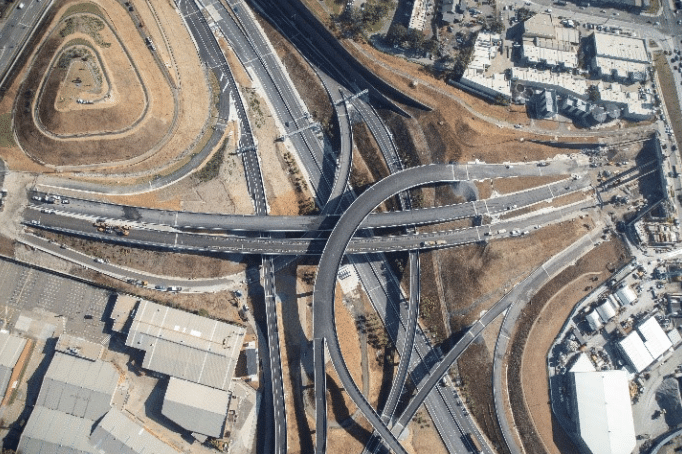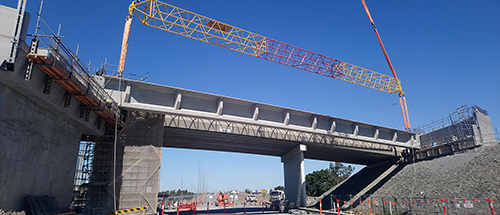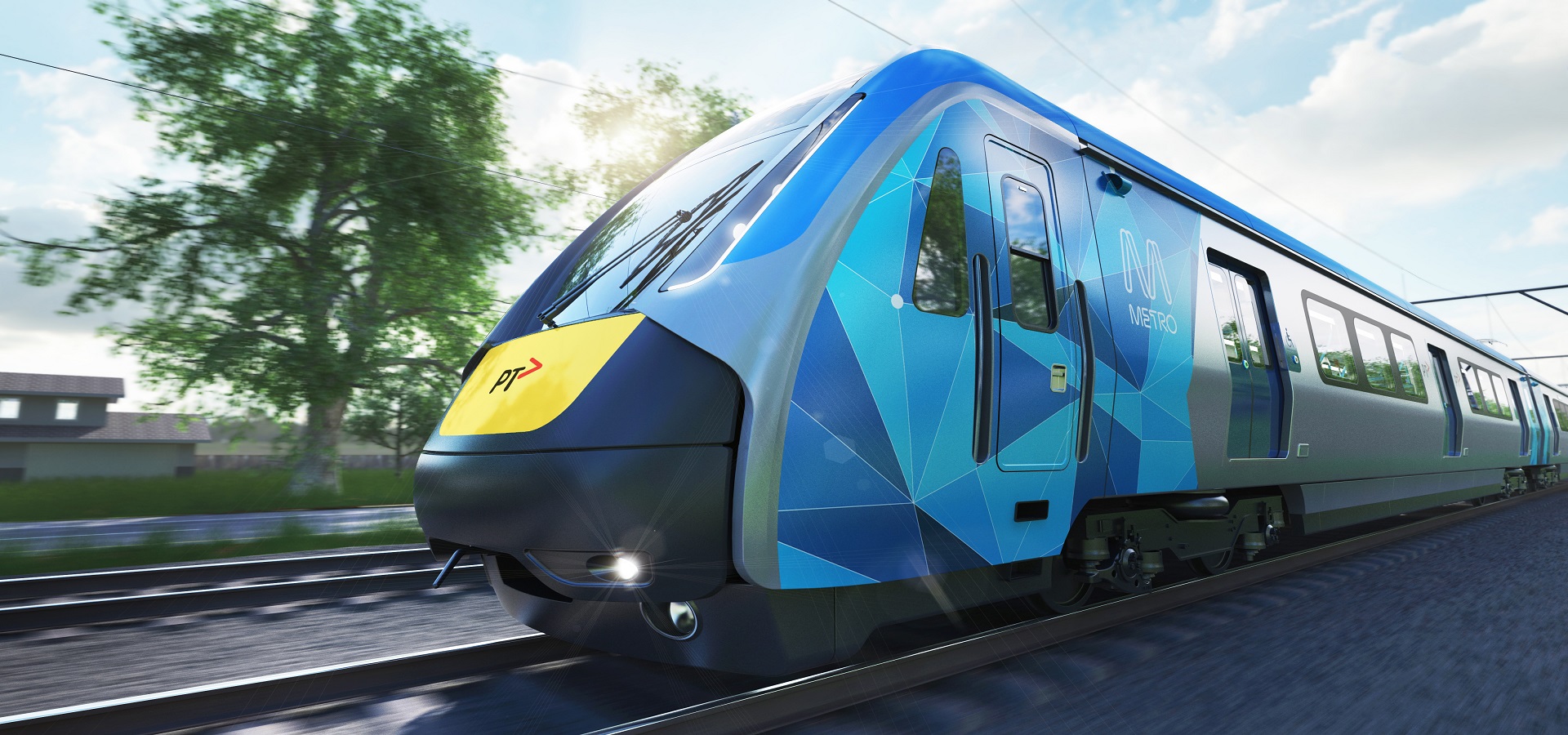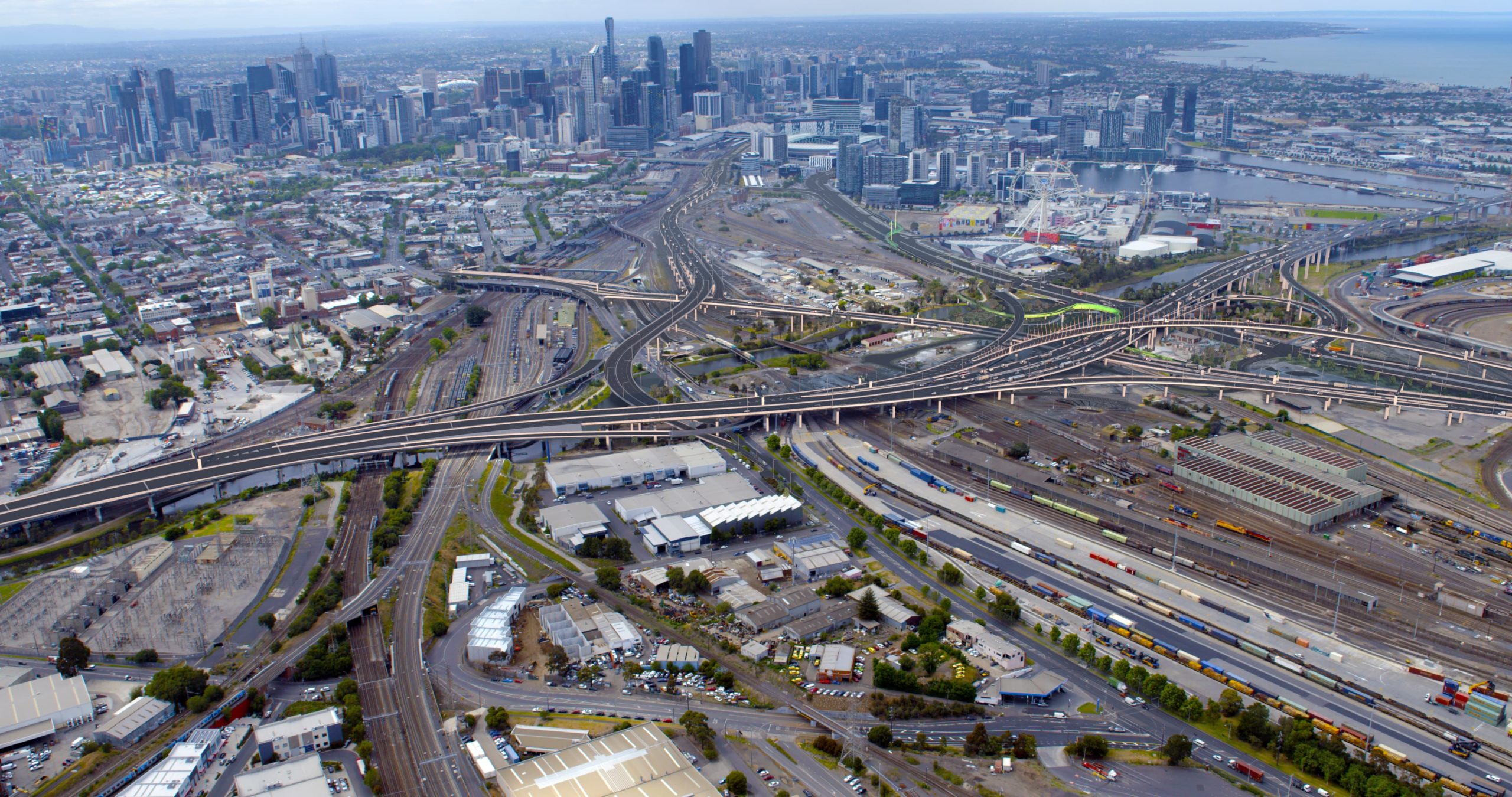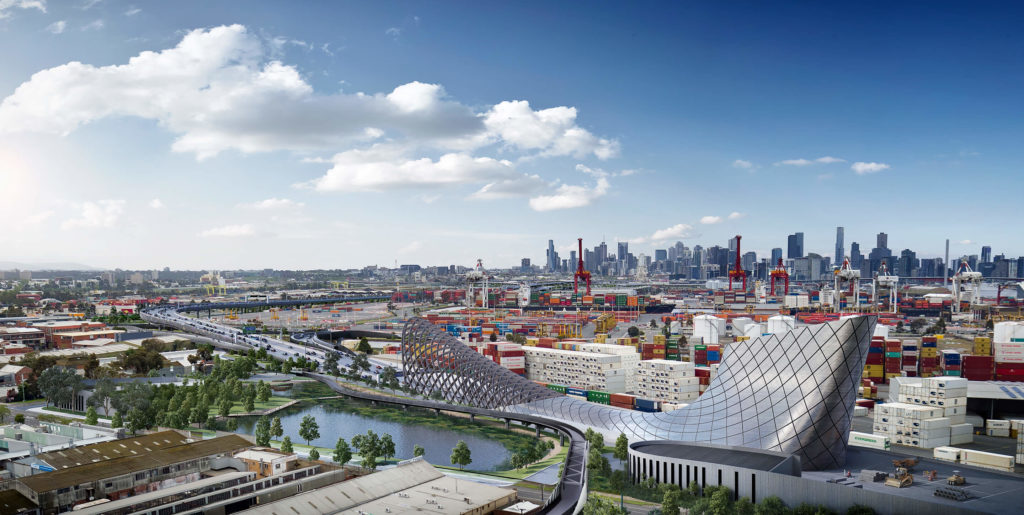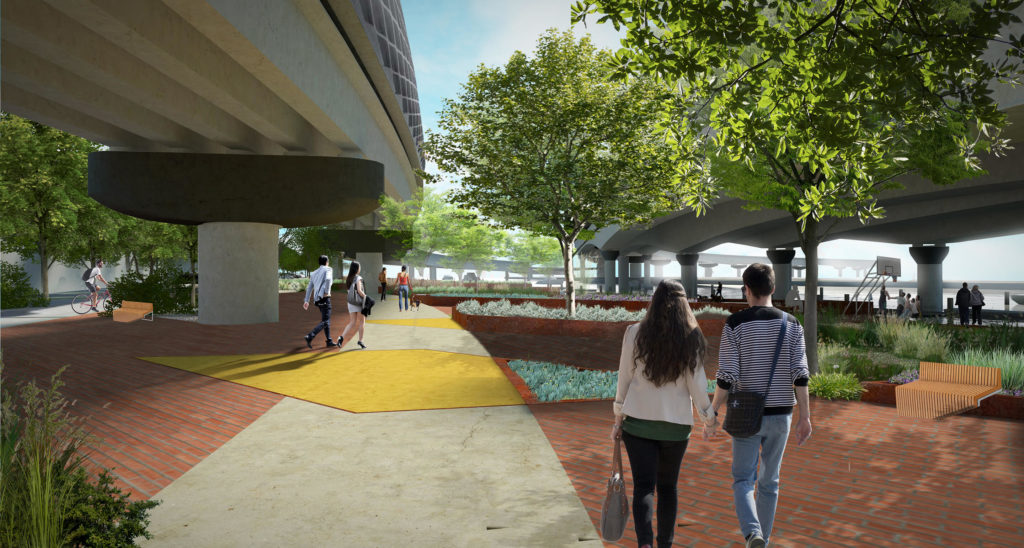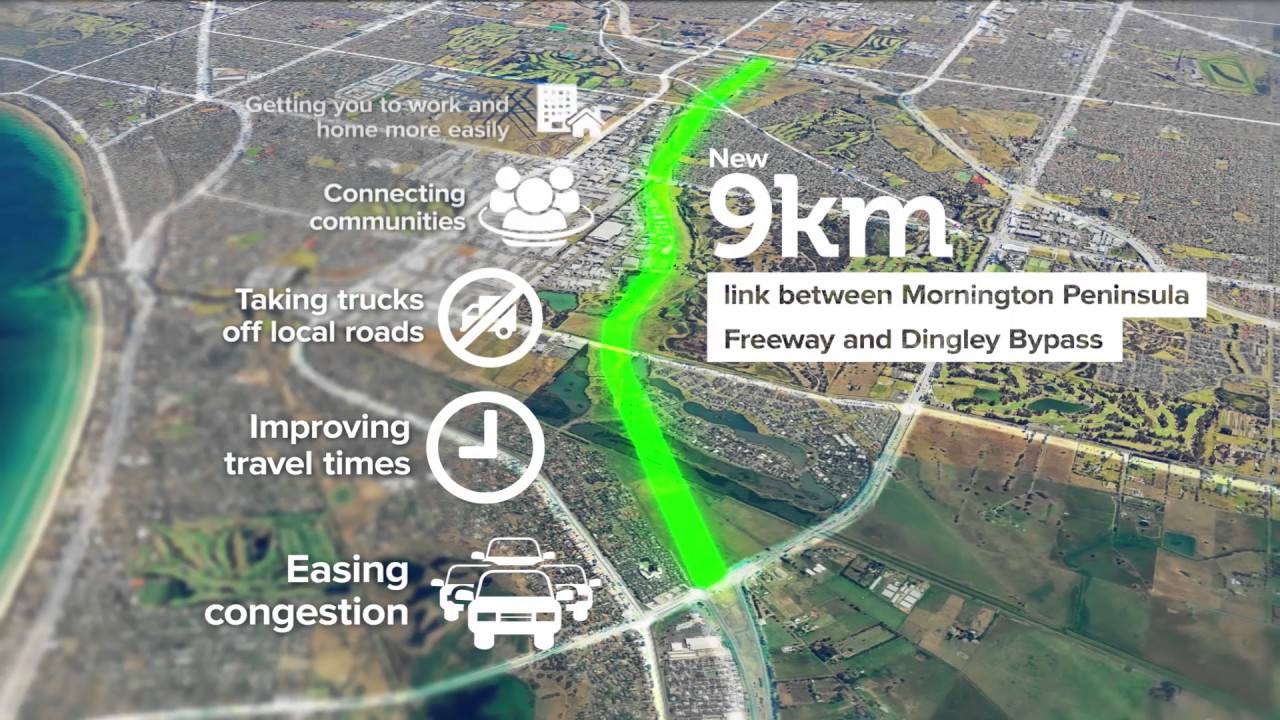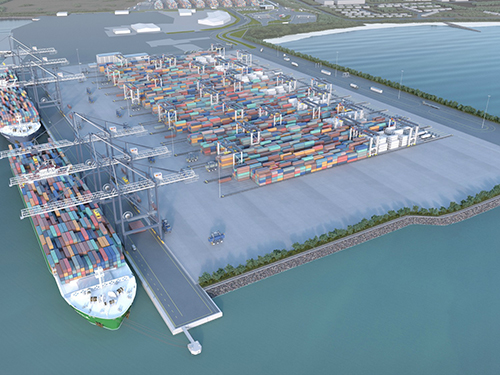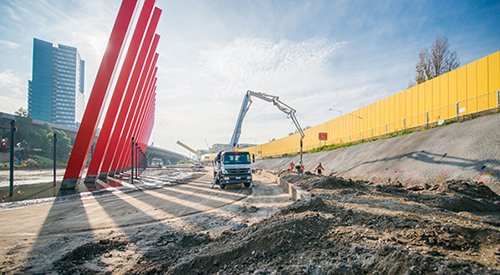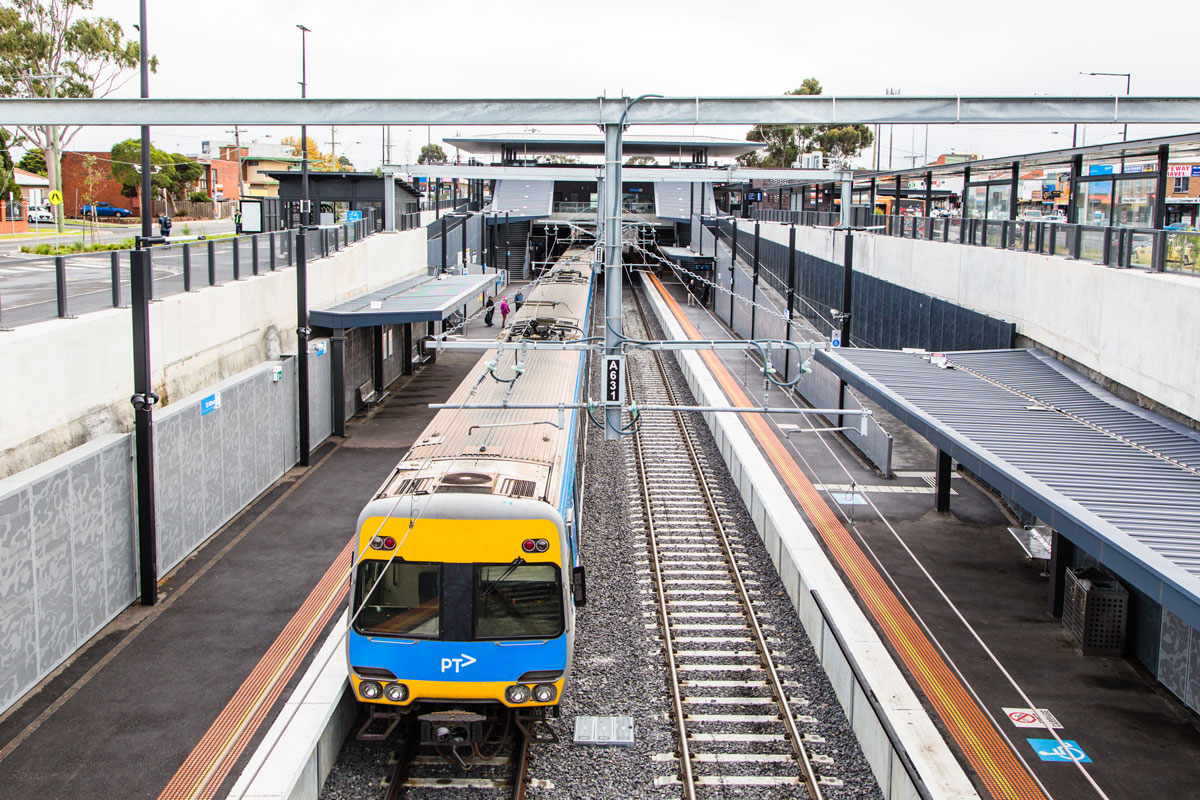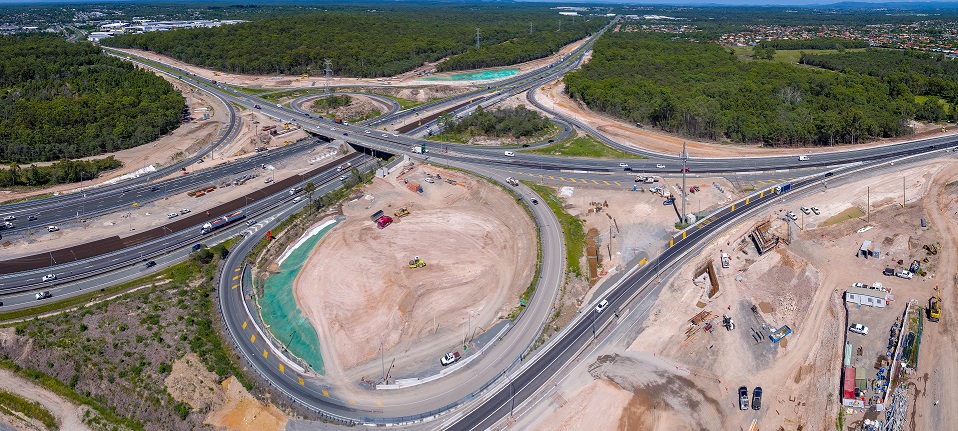Project Description
The Rooty Hill Station upgrade and new 750 space, six storey Commuter Carpark opened in January 2020 has delivered significant community and environmental benefits through sustainable design. This project has left a legacy of community connectivity, responding to the challenge of climate change, while celebrating rich local heritage.
The Project represents a turning point in transport infrastructure for the NSW Government, heralding a new paradigm in building infrastructure that tangibly contributes to the transition towards low carbon emissions, and the use of renewable energy.
As part of the Transport Access Program (TAP), the Project provides a safe and accessible space that encourages community wellbeing through active transport provisions. The success of this place-making project was recognised through collaboration and co-design with stakeholders including the Local Aboriginal Land Council, schools and community groups. Awarded a ‘Leading’ As Built Rating by Infrastructure Sustainability Council (ISC), the project incorporates climate resilience initiatives in its design including; a rooftop solar shade structure and battery storage, and the first electric vehicle (EV) charging stations installed on the NSW transport network.
Key sustainability initiatives include:
- Celebration of Aboriginal heritage and culture with a smoking ceremony, Aboriginal mosaic designed by local Aboriginal artists
- Celebration of Rooty Hill’s rich history and the community diversity, through Heritage Interpretation, e.g. Pride in Place artwork designed by local school children
- 6 % reduction in lifecycle Greenhouse Gas (GHG) emissions
- Installation of 938 photovoltaic panels on the Car Park roof with 8 Tesla batteries, generating 412 MWh per year.
- In the first 30 days of operation, the solar power system offset approximately 60 tonnes CO2-e, (equivalent to planting 850 trees)
- Footpaths constructed from low-carbon concrete with fly-ash and glass fibre reinforced polymer, reducing associated GHG emissions
- Water sensitive urban design features including drought-tolerant native plants and permeable pavers
- Dual rainwater tank system to treat, store and recycle. The recycling system is used to capture stormwater, which is then filtered for vehicle impurities and reused for the landscaping surrounding the building
Key Achievements
The Rooty Hill Station Upgrade and Carpark leaves a legacy of sustainable infrastructure, advancing the NSW government’s commitment to a low-carbon future by setting a new benchmark for future accessibility projects in TAP, the current Commuter Car Park Program and other transport infrastructure projects.
Key project achievements include
- Creation of a sense of place that celebrates the rich and diverse culture and heritage of Rooty Hill
- Celebration of Aboriginal heritage and culture with a smoking ceremony, Aboriginal mosaic designed by local Aboriginal Darug artists
- Celebration of Rooty Hill’s rich history and the community diversity, through Heritage Interpretation, e.g. Pride in Place artwork designed by local school children
- Incorporating design and construction elements for Climate resilience
- 6 % reduction in lifecycle Greenhouse Gas (GHG) emissions
- Footpaths constructed from low-carbon concrete with fly-ash and glass fibre reinforced polymer, reducing associated GHG emissions
- Water sensitive urban design features including drought-tolerant native plants, permeable pavers, and a customised dual rainwater tank and on-site detention system incorporating a siphonic filtration unit to clean stormwater from vehicle impurities for landscape re-use
- Setting a new benchmark for a low carbon future
- Installation of 938 photovoltaic panels on the Car Park roof with 8 Tesla batteries, generating 412 MWh per year.
- In the first 30 days of operation, the solar power system offset approximately 60 tonnes CO2-e, (equivalent to planting 850 trees)The Rooty Hill Station Upgrade and Carpark leaves a legacy of sustainable infrastructure, advancing the NSW government’s commitment to a low-carbon future by setting a new benchmark for future accessibility projects in TAP, the current Commuter Car Park Program and other transport infrastructure projects
Key project achievements include
-
-
- Creation of a sense of place that celebrates the rich and diverse culture and heritage of Rooty Hill
- Celebration of Aboriginal heritage and culture with a smoking ceremony, Aboriginal mosaic designed by local Aboriginal Darug artists
- Celebration of Rooty Hill’s rich history and the community diversity, through Heritage Interpretation, e.g. Pride in Place artwork designed by local school children
- Incorporating design and construction elements for Climate resilience
- 6 % reduction in lifecycle Greenhouse Gas (GHG) emissions
- Footpaths constructed from low-carbon concrete with fly-ash and glass fibre reinforced polymer, reducing associated GHG emissions
- Water sensitive urban design features including drought-tolerant native plants, permeable pavers, and a customised dual rainwater tank and on-site detention system incorporating a siphonic filtration unit to clean stormwater from vehicle impurities for landscape re-use
- Setting a new benchmark for a low carbon future
- Installation of 938 photovoltaic panels on the Car Park roof with 8 Tesla batteries, generating 412 MWh per year.
- In the first 30 days of operation, the solar power system offset approximately 60 tonnes CO2-e, (equivalent to planting 850 trees)
- Creation of a sense of place that celebrates the rich and diverse culture and heritage of Rooty Hill
-
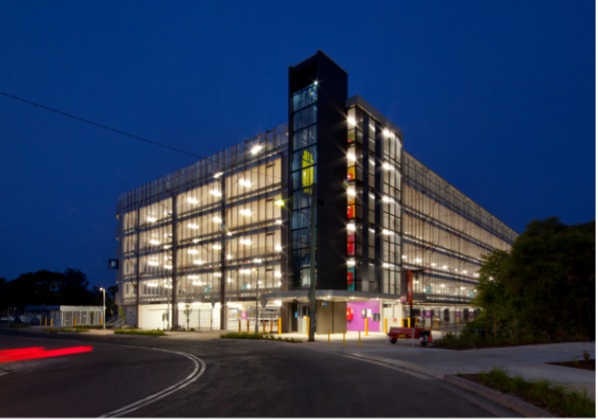
Highlights
Highlight 1: Ene-1: Energy and carbon reductions by 47.6%
The installation of 938 photovoltaic (PV) panels on the Car Park roof with 8 Tesla batteries, generating 412 MWh per year is a key initiative contributing to the project’s reduction in operational Greenhouse Gas emissions of 47.6% over the base case.
The solar PV system generates sufficient energy to support the commuter car park’s operational EV charging stations and lighting demands throughout the day (detailed in highlight 3).
Other initiatives:
- Energy efficient appliances and LED lighting
- GreenPower for the on-site construction compound
- Biofuels used for light vehicles during construction
- On-site offsets with tree planting
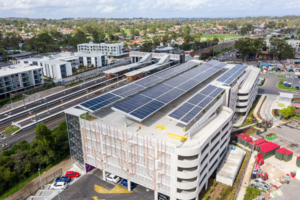
Highlight 2: Hea-1: Creation of a sense of place
The Aboriginal mosaic featured in the station entry was designed by local Aboriginal Darug artists. The station celebrates Rooty Hill’s rich history and the community diversity, through Heritage Interpretation as shown in the Pride in Place artwork designed by local school children.
A mural, named The Guru Badu Deep Wall, is featured on the northern side of the Station. This artwork acknowledges the local creek lines, which were used for hunting, fishing, gathering, and farming local flora and fauna.
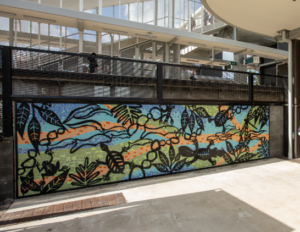
A community event was held on 20 February 2020 to celebrate the completion of this landmark project. A fun and interactive Welcome to Country and Smoking Ceremony were performed by Uncle Wes, Uncle Greg and Jie Pittman for participants from local schools and community groups, along with representatives from TfNSW and our delivery partner, Arenco. This event celebrated the collaboration between these groups in creating a unifying and community-focussed place at Rooty Hill.
“It was an absolute pleasure to watch all three guests perform and welcoming everyone. They are truly inspiring and I am always humbled when I watch them perform.” – Yvette King, TfNSW Senior Aboriginal Participation & Engagement Manager.

The Pride of Place pavers, located at the Station’s southern entrance, features personalised handprints from 450 local school students, and 50 representatives from the Blacktown Older Women’s Network and Northcott Disability Services. The handprints are a reflection of the individuals’ connection to Rooty Hill and its past.
The pedestrian footbridge contain heritage interpretation panels, which recount the story of Rooty Hill Station’s beginnings. At the community event, one guest from the Blacktown Older Women’s Network was deeply moved when she recognised her father in one of the photographs featured on a footbridge panel.
Highlight 3: Inn-1 State First for an integrated solar power and electric vehicle charging station system
The Commuter Car Park delivered the first operational electric vehicle (EV) charging stations on the NSW transport network. The solar PV system generates sufficient energy to support the commuter car park’s operational EV charging stations and lighting demands throughout the day. The car park has been future-proofed, with the capacity to increase the number of EV charging stations from 10 at present, to a total of 125.
State First for customized dual rainwater and on-site detention system. The system stores and recycles our most precious resource, water.
This recycling system is used to capture and clean 32,300 litres of storm water, which can be reused for the landscaping surrounding the building. The on-site detention tank compartment features a Siphonic drainage system that drains into the adjacent rain garden swale to minimise flooding in a flood prone area.
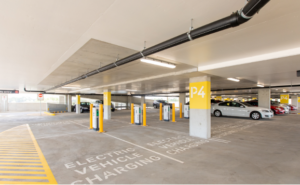
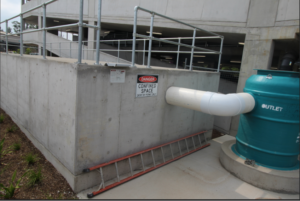
Acknowledgments
It is acknowledged that the achievement of the ISC rating has been the result of multiple stakeholder input including
- Transport for NSW as proponent
- Arenco as principle contractor and ISC assessor
- Norman Disney Young as services engineer undertaking climate change risk assessment and resource efficiency modelling
- Solgen as detailed designed for the solar PV system
- Cardno as structural and civil engineers and designed customised OSD rain tank
- DesignInc as project architect, including heritage and urban design service
- ISC staff

